Visit Mali (15 days)
Day
1: Arrival in Bamako
Bamako, site of the three crocodiles. Welcome at the
airport, installation in hotel, contact with the guide and
review of the program. Diner at the “Restaurant Libanaise”.
Night in Bamako at a hotel with A/C.
Day 2:
Bamako -
Ségou (235 km)
-
San (200 km)
 Breakfast
at the hotel before departure. Leave Bamako for Ségou
(3 hrs) with a visit to the ancient site of Ségou, the
seat of the Bambara kingdom and an encounter with the
giant balanzan trees in the land of 444 balanza. Lunch
at Ségou, departure in the afternoon for San (3 hrs)
passing through Bobo villages, Bla and others. Night
in San.
Breakfast
at the hotel before departure. Leave Bamako for Ségou
(3 hrs) with a visit to the ancient site of Ségou, the
seat of the Bambara kingdom and an encounter with the
giant balanzan trees in the land of 444 balanza. Lunch
at Ségou, departure in the afternoon for San (3 hrs)
passing through Bobo villages, Bla and others. Night
in San.
Day 3:
San
-Djenné (250 km)
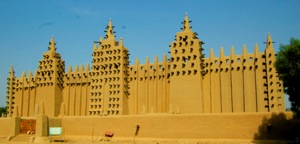
Day 4: Djenné- Sangha (Dogon Country) (230 km)
Day 5: Dogon Country continued
Go to M’Borko, an animist Dogon Village. This village has a population of sacred caiman that come to the call of the village marabou. Witness this extraordinary phenomenon. These enormous crocodilian reptiles are quite calm and will allow you to approach them for a once in a lifetime photo opportunity. Night in M’borko.
Day 7: M’Borko - Hombouri (215 km)
Leave Dogon country for Hombouri (3 hrs), the Hand of Fatima, the highest mountain of Mali. Because of its legends surrounding Fatima, daughter of the prophet Mohamed, it is considered the Mecca of Mali. You will have the afternoon to explore an extraordinary countryside with is lunar landscape and world class climbing mountains, capital of the Songai Empire in the time of Soni Ali Ber, the great sorcerer. Night in Hombouri at the foot of the mountain of the Hand of Fatima.
Note: While some hiking can be done you must be certified and use proper rock-climbing equipment to try and scales these mountains. Equipment is available for rental near the base from a climbing expert. Those truly interested may spend their afternoon in this optional activity.
Day 8: Hombouri - Timbuktu (365 km)
Leave Hombouri for Timbuktu via Douenza and Bambara Moudie (5 1/2 hrs). Lunch Break in Bambara Moudie. Arrive at Timbuktu in the evening. Installation in the hotel Sahara Passion, dine on a traditional mishoui (whole roast sheep stuffed with couscous) traditional dance to Tuareg music. Spend night in Timbuktu.
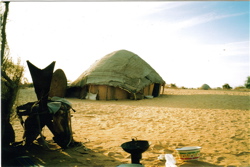
Breakfast at the hotel. Guided visit of the city and historic sites of Timbuktu, explorers’ homes, museum, library of ancient manuscripts, Djingere Ber and Sidi Yahya mosques, Sankore University, market, artisan centre. Lunch at the Poulet D’or. Optional visits to other libraries and museums (entry fees vary from 1.5 - 4 euro) Depart at 16h00 on camel back for a Tuareg camp 5 km from town, about an hour ride. Special Tuareg meal “toukasso” (steamed bread in a special sauce) Night in the desert camping under the stars and traditional stories around the campfire.
Day 10: Excursion on the Niger River
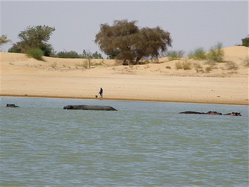
Day 11: Timbuktu - Mopti (550 km)
After an early breakfast head to Mopti. Six hour drive. Lunch break in Douenza (4 hrs, 190 km from Timbuktu). Evening, enjoy a relaxing stroll by the Niger river. Dinner in Mopti at “le Bozo”. Night in the “Hotel le Campement”
Day 12: Mopti - San (250 km)
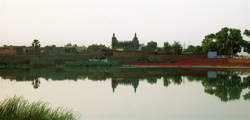
Day 13: San- Sikasso (495 km)
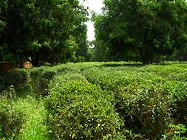
Day 14: Sikasso -Bamako (375 km)
Return to Bamako four hours. On the way stop and visit the tomb of King Tieba. Installation in hotel. Free Afternoon.
Day 15: Bamako, Departure Day
Breakfast at hotel. Visit of Bamako; museum, zoo, market, mosque, artisan centre, etc. Liberate the hotel rooms at 10 a.m. (a day room will be available for storing belongings) Evening Departure for Senou Airport.
